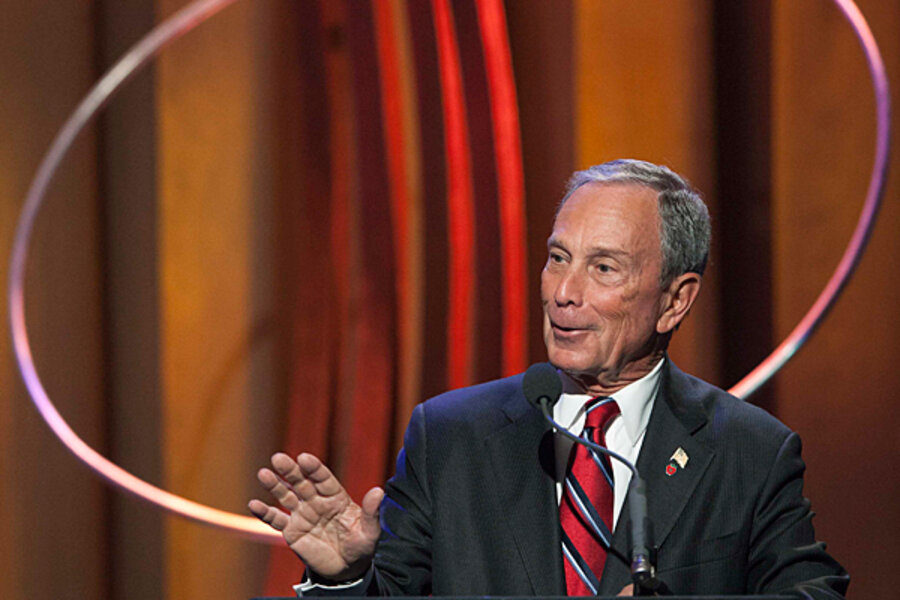Cleanest air in 50 years! How did New York do it?
Loading...
| New York
Those living in American cities may not be able to go out for a nonmetaphorical “breath of fresh air” quite yet, but there are signs of a remarkable rise in the quality of the nation’s air – even though pollution remains a threat to people’s health and contributes to global warming, experts say.
The air quality in New York is the best it has been in 50 years, Mayor Michael Bloomberg announced Thursday.
And in Washington, D.C., the air surrounding the nation’s capital has shown “major improvement” the past few years, according to Metropolitan Washington Council of Governments, a nonprofit association of area leaders. The region didn’t have a single “code red” alert for dangerous air quality this summer – only the second time this has happened in 16 years, and the first since 2009.
Even Los Angeles, still the smog capital of the United States, reported one-third fewer unhealthy ozone days this year compared with more than a decade ago, according to the 2013 “State of the Air” analysis by the American Lung Association. And 15 of the 27 cities with the most ozone pollution improved their air quality, with 13 of the country’s most smog-polluted cities experiencing their best year yet – even though most continue to remain at dangerous levels.
Indeed, the overall quality of the nation’s air is much improved from a decade ago, according to the ALA analysis. Although some of this improvement can be attributed to a drop in energy use and changes to travel habits since the Great Recession, it is part of larger decades-long trend since 1970, when Congress created the Environmental Protection Agency (EPA) and passed the major provisions of the Clean Air Act.
Since then, air quality has steadily improved – even as energy-hungry industries and a population with a voracious appetite for carbon-based fuels have continued to expand. At the same time, however, the emissions that spew out the six most widespread air pollutants have dropped, the ALA reported.
Despite the improvements, these pollutants remain a concern for those with conditions diagnosed as asthma, diabetes, and other lung-related illnesses. And the ongoing release of carbon-based emissions continues to contribute to global warming – which is likely to get significantly worse if efforts to limit these are not accelerated soon, according to climate scientists meeting in Stockholm, who released their report Friday.
Mayor Bloomberg, who has been outspoken during his last two terms about the need to address climate change, attributed the dramatic improvement of air quality in New York to the city's “Clean Heat” program, which phased out the use of the most heavily polluting heating oils.
“The continued health benefits of this conversion to cleaner heating fuels will make it the single biggest step to save lives since we began our comprehensive smoking control program,” said Bloomberg, who led the ban of smoking in most public spaces in the city, even outdoors. “City government’s No. 1 responsibility, I’ve always thought, is protecting the health and safety of our people.”
The cleaner air prevented 800 deaths and led to 2,000 fewer emergency room visits and hospitalizations from lung problems, compared with 2008, the city said.
These improvements came as the city's program targeted 10,000 mostly older buildings, each with furnaces burning the highly polluting heating oils. Since 2011, some 2,700 were converted to burn cleaner fuels, with another 2,500 now in the process of converting.
"The substantial reductions in air pollution we're seeing translate into healthier New Yorkers who are breathing cleaner air," said Michael Seilback, vice president for public policy and communications at the American Lung Association of the Northeast, in a statement. "As more buildings convert to cleaner-burning fuels, we will see even greater health benefits.”
Along with other state requirements for cleaner-burning fuels, these efforts have already resulted in a 69 percent drop of sulfur dioxide in the city's air since 2008. Soot pollution, too, has dropped 23 percent since 2007. And according to the city, the biggest improvements of air quality came precisely in those neighborhoods where buildings had converted their boilers to cleaner-burning fuels.
Other cities, however, have seen a decline in air quality. In August last year, San Antonio, the nation’s seventh largest city, fell into the EPA’s “monitored non-attainment” status, which kicks in when a region fails to meet federal ozone standards. The city also failed to meet its own air-quality goals, attributing it to a 16 percent rise in its population and an increase in local oil production.
Seven other cities saw their year-round levels of particle pollution increase, including Fresno, Calif.; Allentown, Pa.; and Atlanta.
"The importance of cleaner air cannot be overstated," said Marcia Bystryn, president of the New York League of Conservation Voters. "Clean air protects public health, makes it easier for children and seniors to enjoy the outdoors, and saves taxpayer money by cutting down on hospitalizations triggered by air pollution."
Experts hailed the New York program as a model for other cities to follow.
"Everybody knows what we have to do,” Bloomberg said at Thursday’s news conference. “There's no new science here. Stop putting the stuff in the air and you will clean up the air.”







